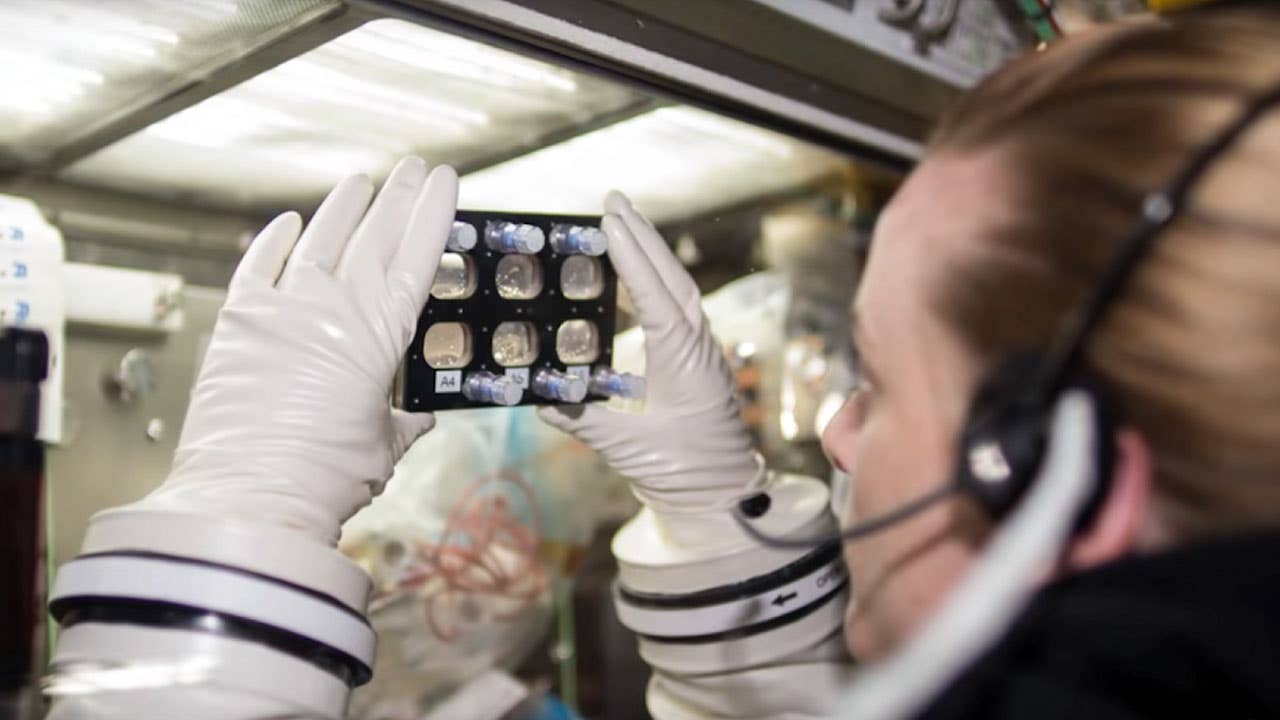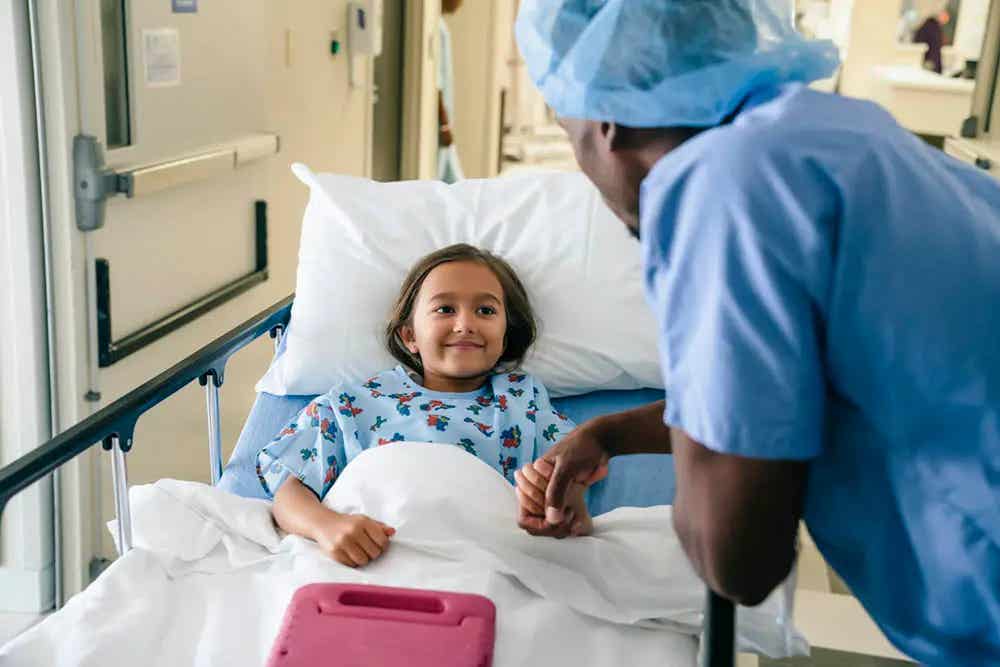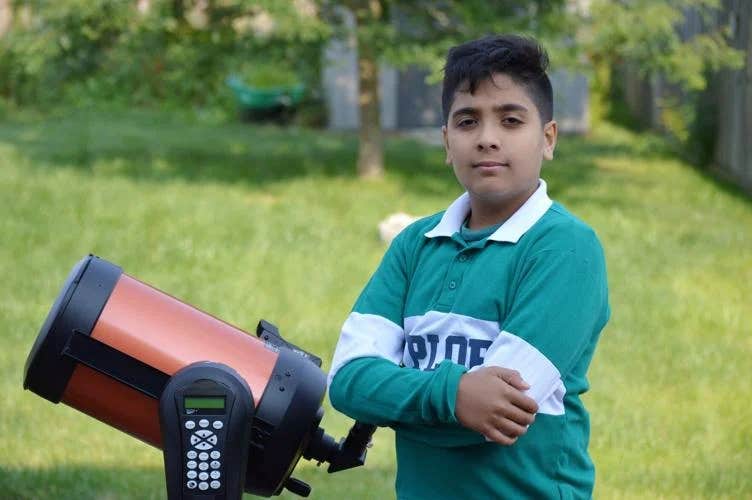Space-cultured stem cells show potential to cure cancer and heart disease
Space-cultured stem cells show potential for new therapies, from cancer to heart disease. Microgravity could revolutionize treatments.

Microbiologist and astronaut Kate Rubins examines stem cell–derived heart muscle cells aboard the International Space Station. (CREDIT: NASA)
Stem cells grown in microgravity aboard the International Space Station (ISS) are showing potential to transform treatments for complex diseases. This research, led by Fay Abdul Ghani and Dr. Abba Zubair from the Mayo Clinic, explores how microgravity can enhance the regenerative abilities of stem cells.
Dr. Zubair, a regenerative medicine expert, notes that space offers a unique opportunity to observe cellular mechanisms that remain undetectable on Earth. This work, published in NPJ Microgravity, aims to assess whether space is an ideal environment for producing high-quality clinical-grade stem cells, which are essential for developing cell-based therapies.
Conducting stem cell research in space reveals significant advantages. For instance, cells grow more naturally in a three-dimensional state under microgravity, closely resembling the way cells develop in the human body. This configuration differs from Earth-based, two-dimensional cultures, which lack the depth needed to mimic human tissue effectively.
The findings from this research are exciting. Dr. Zubair explains, "Our hope is to study these space-grown cells to improve treatment for age-related conditions such as stroke, dementia, neurodegenerative diseases, and cancer.” However, the question remains: can these space-expanded cells survive and maintain their function upon return to Earth? Early results are promising, as space-grown stem cells display enhanced growth potential and retain their functionality.
Space-cultured stem cells have shown specific advantages for disease modeling and testing new therapies. For instance, researchers can use space-grown cells to create lifelike models of diseases such as cancer, providing opportunities to study disease progression and test novel treatments. Additionally, several specific stem cell lines have shown promising clinical potential:
- Mesenchymal stem cells: Known for their immunosuppressive properties, these cells show improved capabilities when grown in microgravity, which could benefit therapies for immune-related conditions.
- Hematopoietic stem cells: These blood-regenerating cells expanded in space have the potential to produce both red and white blood cells, paving the way for managing blood cancers and other hematological disorders.
- Cardiovascular progenitor cells: Serving as the building blocks for heart muscle and blood vessels, these cells grown in microgravity might one day help repair tissue damaged by heart attacks.
- Neural stem cells: Crucial for brain development and repair, these cells also retain regenerative capabilities after being cultured in space, presenting a potential treatment path for neurological disorders.
Related Stories
Despite these benefits, challenges remain. Prolonged exposure to space radiation could damage cellular DNA, potentially impairing cell growth and function. Dr. Zubair’s team has investigated the risk of cancerous transformation, finding no evidence that microgravity culture induces chromosomal changes in mesenchymal stem cells. However, scientists acknowledge the need for more data to fully understand the impact of space on stem cell properties.
Microgravity research is in its early stages, and the influence of space on cellular function is not yet fully understood. Researchers emphasize that continued support for these studies is essential for assessing the full potential of space-grown cells in regenerative medicine.
Since the inception of human spaceflight, scientific interest has focused on understanding how space affects the human body. This research initially sought to ensure astronauts' health but gradually expanded to explore the broader implications of microgravity on biological processes. The ISS now serves as a vital research platform for academic and commercial entities to conduct experiments that could benefit health on Earth.
An emerging area of study involves induced pluripotent stem cells (iPSCs), which can develop into nearly any cell type in the body. Derived from a patient’s own cells, iPSCs can be tailored for personalized treatments. However, producing the large quantities of cells required for therapies remains a challenge on Earth, partly due to gravity’s effects. In microgravity, cells experience reduced stress and can replicate more efficiently, supporting efforts to produce high-quality stem cells for future treatments.
Stem cell research in space holds promise for producing cells with therapeutic benefits for several critical health issues. For example, growing hematopoietic stem cells aboard the ISS has shown they can differentiate into blood cells, offering a new potential treatment for patients with blood disorders.
Cardiomyocytes derived from iPSCs have shown promise as well, especially in providing a cell-based therapy to replace damaged heart tissue. Experiments have revealed that these cells adapt to spaceflight by changing their gene expression, increasing their viability for therapeutic applications.
Neural stem cells, too, have shown potential for space-cultured cell therapies. Neural cells that expand in a weightless environment can maintain their regenerative potential when brought back to Earth. These cells could provide a foundation for treating neurodegenerative diseases, such as Alzheimer's and Parkinson’s, through cell replacement therapies.
In addition to these cell-based therapies, space-cultured stem cells are helping scientists better understand complex diseases. Researchers can use these cells to model disease mechanisms, creating accurate simulations that help track disease progression and test potential treatments. Stem cell research in space expands the scope of biomedical research, encouraging more precise investigations into disease behavior.
Stem cells cultured in space could support not only health on Earth but also long-duration space missions. Understanding how these cells behave under microgravity aids in developing treatments for health issues that may arise during space travel. Stem cell therapies could help astronauts manage tissue damage or illness during extended missions, such as those planned for Mars.
This work is drawing attention from commercial groups interested in biomanufacturing in low Earth orbit (LEO). As space access costs decrease, private companies may soon develop commercial applications for space-grown stem cells, expanding both scientific knowledge and commercial opportunities.
Microgravity could become an environment where cells and other biological products are produced for research and clinical use, encouraging advances in regenerative medicine and possibly benefiting the broader scientific community.
Growing cells in space pushes the boundaries of medical science, providing a unique platform for discoveries that could impact health care both on Earth and beyond. While significant challenges remain, the potential for space-cultured stem cells to improve regenerative treatments is clear.
This work reflects a collaborative effort, requiring input from scientists, governments, and private sectors to maximize the therapeutic benefits of this promising field.
Note: Materials provided above by The Brighter Side of News. Content may be edited for style and length.
Like these kind of feel good stories? Get The Brighter Side of News' newsletter.



